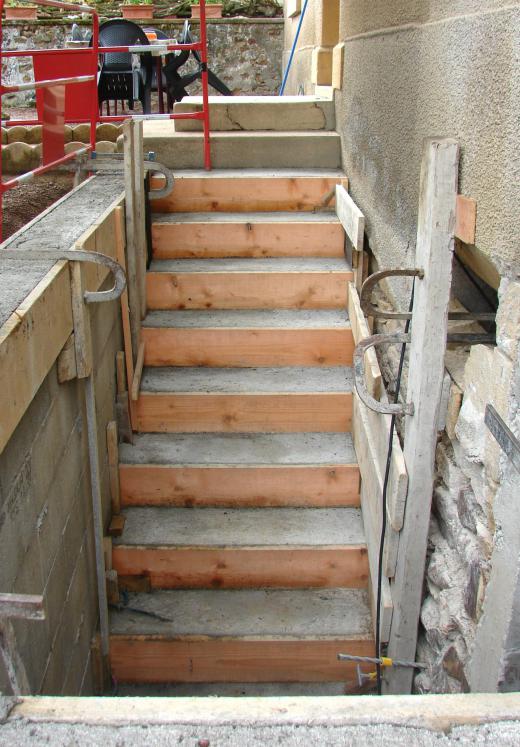A masonry drill is used to make holes in concrete and other hard, brittle materials. Drilling holes into masonry requires the proper drilling tool, a high-quality drill bit, and some operator technique. A masonry drill is often used in building construction and in some home improvement projects, such as finishing a basement.
A drill is a power tool specially designed for drilling holes. It is usually electrically powered but can also be operated using air pressure. The power drill rotates a cutting tool called a drill bit. A drill bit is a cylindrical shaft that contains helical grooves, known as flutes, with sharp cutting edges to cut and remove the material being drilled.

Concrete and other hard materials require a good quality power drill with several working features. These include the ability to vary rotational speed, set the depth of the hole to be drilled, and grips or fixtures to accurately position the drill in order to achieve the desired location and orientation of the hole.
Perhaps the most useful feature required for a masonry drill is hammering action. Hammer drills, or rotating hammer drills, provide a pounding action along the axis of the drill bit while it rotates. The function of a hammer drill is similar to a jackhammer, which is used for removing concrete and masonry materials in large construction projects. A hammer drill increases the ability of the drill bit to remove material quickly and with less effort, producing better quality holes and improved accuracy.
A special type of drill bit is required for drilling into concrete and masonry. Masonry drill bits come in a variety of standard diameters and lengths, and have different cutting surfaces depending on the application. More expensive drill bits are made using higher quality materials to improve cutting performance and extend the usable life of the bit. Masonry drill bits will vary in cost based on the material and features of the bit.
The type of drill bit selected depends on the material to be drilled and the size and shape of the hole required. Those with tungsten carbide tips are especially useful for drilling into masonry when a hammer drill is used. Tungsten carbide is a very hard and durable material that is resistant to wear under rough drilling conditions, so the drill bit stays sharp for a longer period of time. The shaft, or shank, of the drill bit is also heat-treated and surface hardened to maintain its sharpness and extend its usable life.
